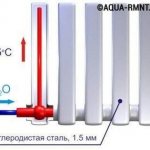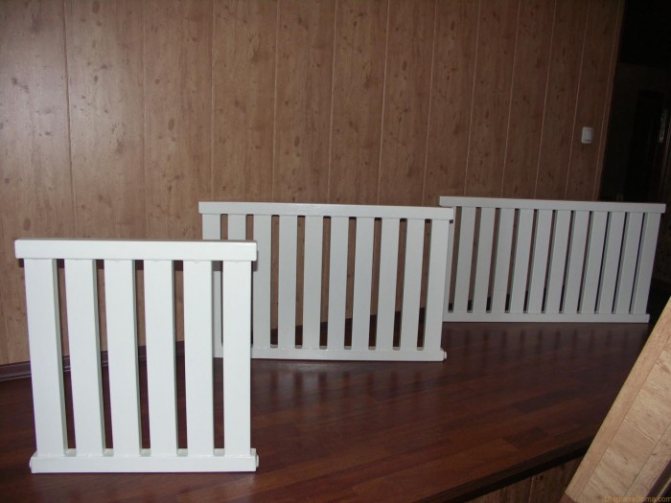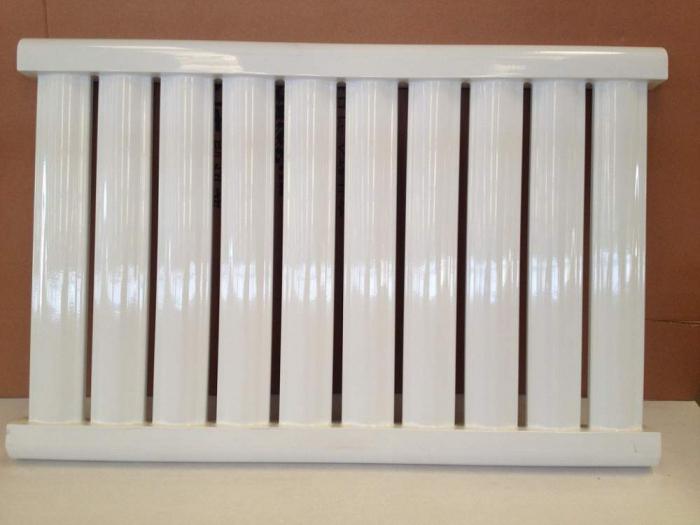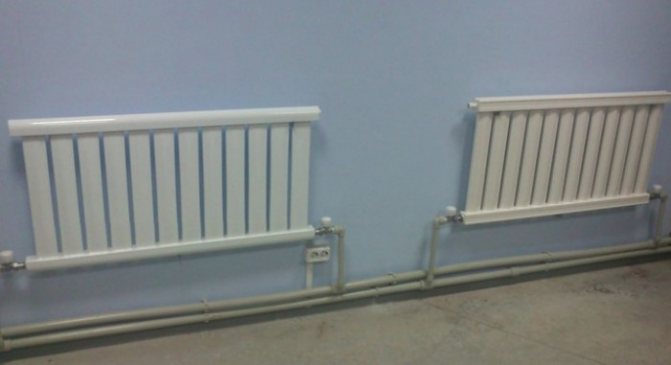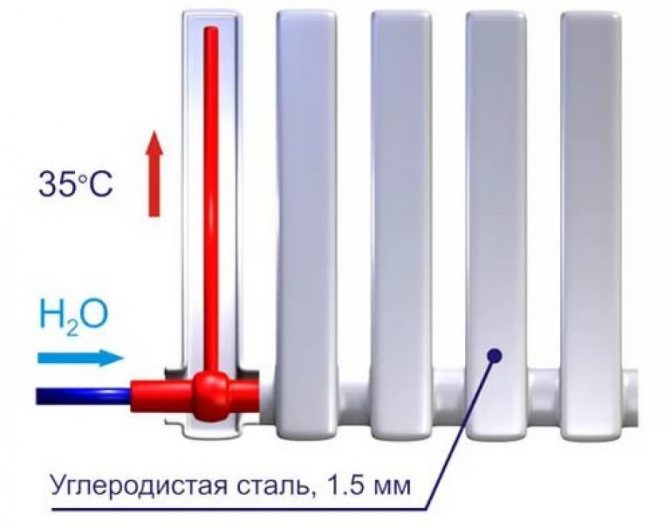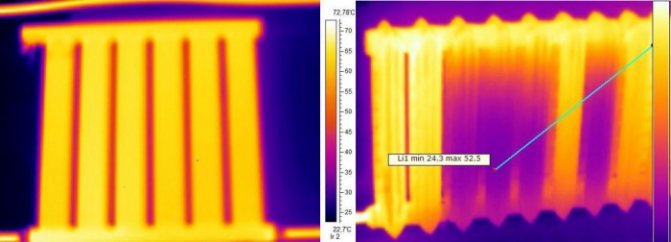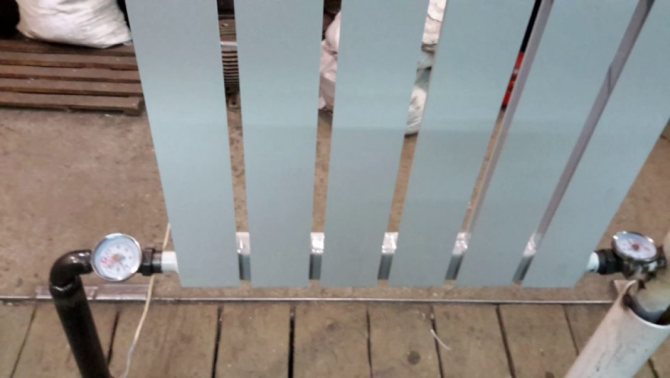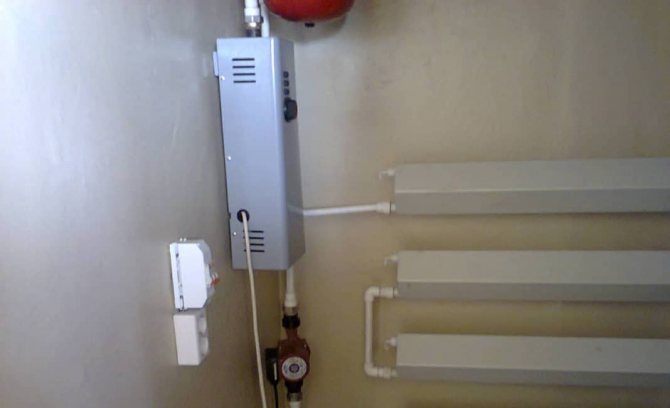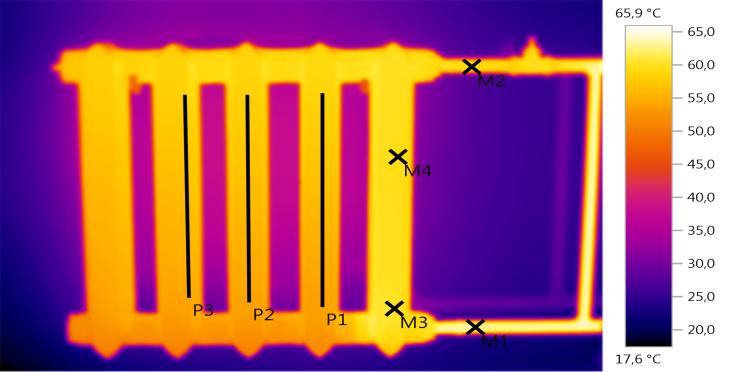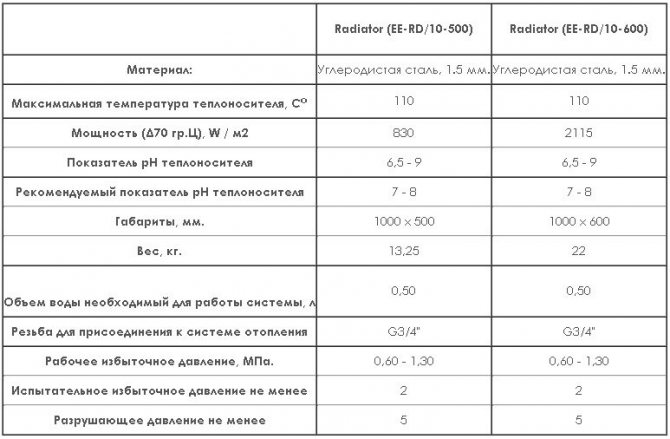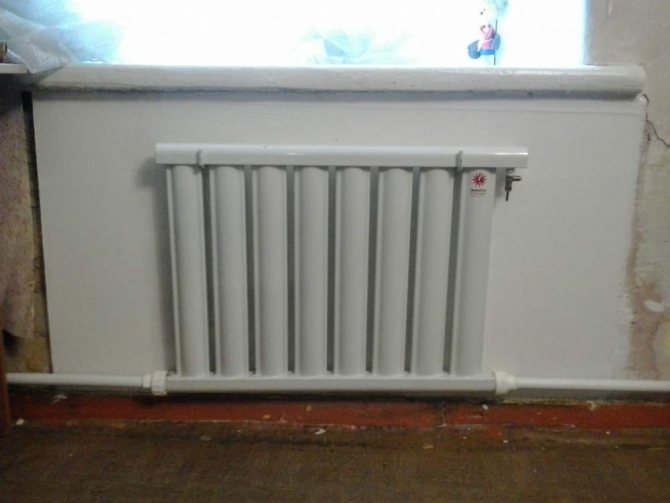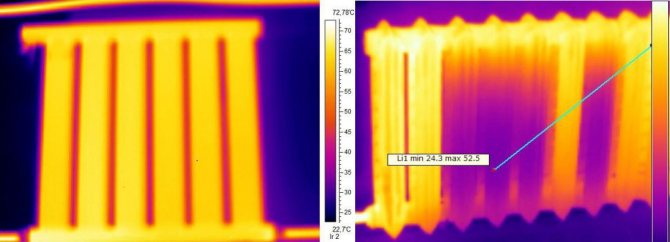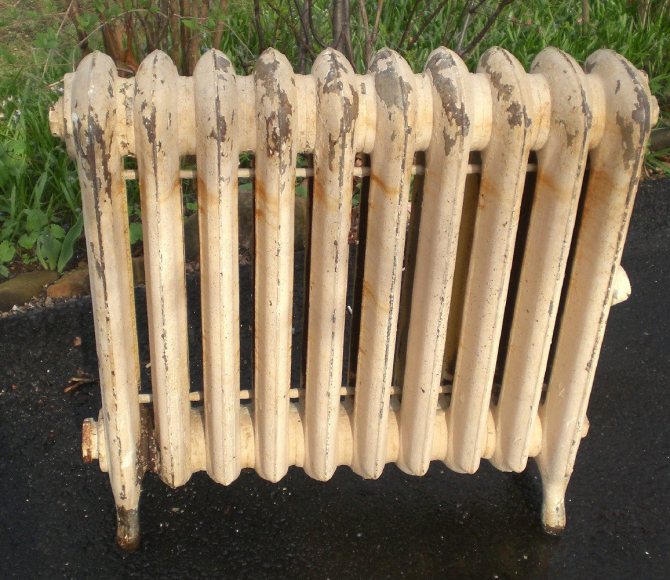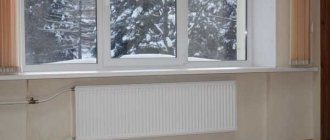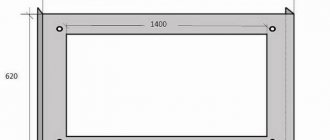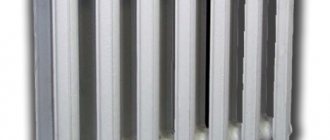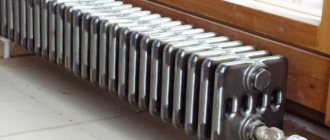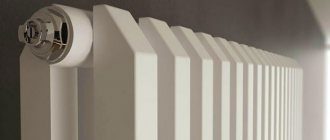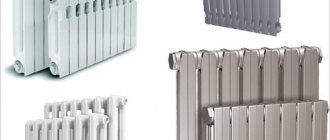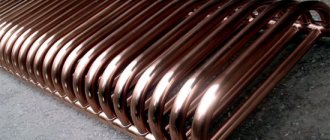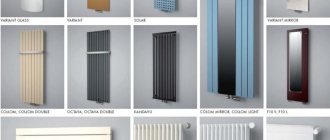A little bit about the device
We can say that a vacuum heating radiator is not a revolutionary discovery. It has been known for a long time, but it is a different matter that it has acquired demand only now. The device is quite simple. In appearance we have a traditional sectional heating device, but not water is used as a heat carrier, but a lithium-bromide solution, which begins to boil already at +35 degrees Celsius. To reduce the system pressure as much as possible, it is necessary to completely remove air from there, hence the name - vacuum. Water flows from the bottom of the heater, which does not border on the heat carrier. These liquids come into contact through the metal pipe wall. It turns out that the water heats up the heat carrier, which very quickly returns heat to the walls of the heater.
How this equipment works
Vacuum radiators have appeared on the domestic market relatively recently, but have already gained considerable popularity among consumers. Visually, these heating devices are not much different from the sectional batteries we are used to. They are made of carbon steel and have a traditionally white or decorated surface.
But vacuum radiators are arranged radically differently. The heating medium of the heating system (water, antifreeze) in the vacuum radiator circulates only through a straight pipe located in its lower part. Instead of water, the sections of the device contain a small amount of lithium-bromide liquid, which boils under vacuum at 35 degrees. The contact of the primary coolant (water) with the secondary (special liquid) occurs exclusively through the metal surface of the pipe.
The principle of operation of the vacuum radiator is as follows:
- The water from the heating system enters the lower part of the radiator.
- Heat is transferred to the secondary heat carrier.
- The working fluid turns into a vaporous state.
- Powerful evaporation quickly and evenly heats up the metal body of the device and the radiator gives off heat to the surrounding air.
- Condensate goes down along the inner walls of the sections, and then, boiling, turns into steam again.
One section of a vacuum radiator contains only 50 ml of coolant (for comparison: in an aluminum one - 350 ml). A smaller volume of coolant is easier and faster to heat up - after all, this requires several times less heat. Considering that the lithium bromide liquid begins to "work" at a very low temperature, it is obvious that the energy consumption for heating water in the system when installing vacuum heating radiators will be small. This is the main "trump card" of the equipment in comparison with other water heating units (cast iron, aluminum, bimetallic).
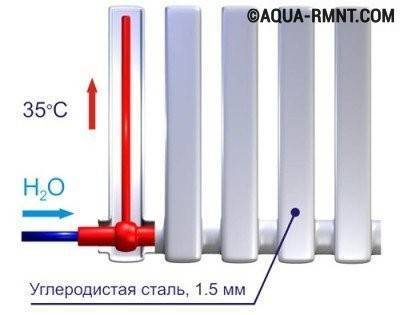
Many are skeptical about the advantages of vacuum radiators, but practice shows that the principle of operation of the units is very effective.
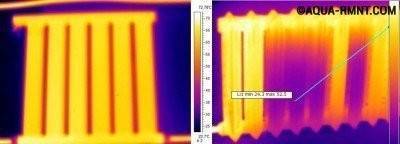

Shooting with a thermal imager confirms the uniform heating of the vacuum radiator and its higher efficiency in comparison with a cast-iron battery
Vacuum radiators are perfectly "combined" with many heat sources - ovens, electric and gas boilers, solar collectors. They are a worthy choice for both autonomous and centralized heating systems. Efficiently heating residential and industrial buildings, vacuum-type radiators are increasingly becoming the confident choice of practical consumers.
More about the principle of action
Since we have already got a little familiar with the design, it would be preferable to understand the operation of the device. So, hot water comes from the system, which transfers heat to the lithium bromide solution. Due to the low boiling point, it quickly evaporates, then the condensate flows down and is again converted into steam. For this simple reason, the lower wall of the pipe is actively cooled. The temperature difference contributes to the increased heat flux.
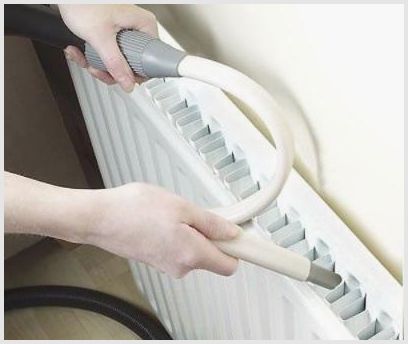

Recommendations for use
The equipment in question has proved to be an economical and highly efficient way to heat summer cottages used seasonally and large private houses intended for year-round use. The heating system is activated within a few minutes; it does not require preliminary air bleeding.
Experts advise, even at the installation stage, to take care of creating certain conditions that contribute to the rationalization of the use of vacuum equipment:
- the building, the apartment must be insulated as much as possible in order to reduce the level of heat loss. A reasonable solution would be to install modern types of double-glazed windows on the windows, seal cracks, supply the roof and floor with high-quality thermal insulation. In this case, the devices will function with greater efficiency;
- the number of sections, respectively, and their overall performance should be suitable for the parameters of the serviced sections. Even at the stage of choosing devices, you need to take into account the height of the ceilings, the footage of the rooms;
- the heat transfer of the equipment is always determined by the temperature of the working environment, the optimal conditions are when the water is heated to at least 60 ° C.
In the profile market, there is a systematic increase in demand for batteries using a lithium-bromide mixture, due to which manufacturers have significantly expanded the possibilities of their use. In addition to heating summer cottages and private houses, vacuum systems are in demand at industrial and warehouse facilities, when arranging garages and public buildings, greenhouses and farms.
Who is this heating method suitable for?
In many cases, it makes sense to think about purchasing heating devices of this type in a summer cottage or in a huge house outside the city. This is due to the fact that in rooms with a decent area it is necessary to heat a considerable amount of the heat carrier to a high temperature. And vacuum heating batteries make it possible to significantly reduce the cost of heat supply. In addition, the room will heat up much faster. Moreover, heaters have several sensors. When the required temperature is reached, they will turn off themselves, and the boiler will go into standby mode. What's more interesting: absolutely any boiler will do. It does not matter if it does not stop working on solid or liquid fuels. Naturally, one cannot say that such batteries do not have their own invisible moments and disadvantages, they are. But we will talk about this a little later. And at the moment I propose to deal with the choice.
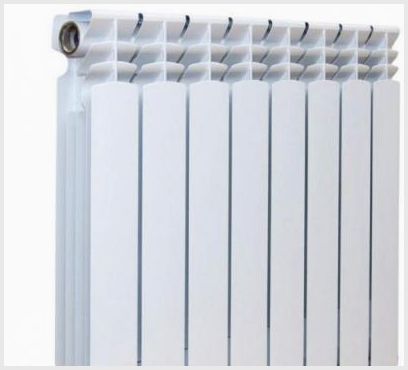

Summarizing
New products should be treated with caution and vacuum batteries are no exception to this rule. Despite loud advertisements, the effectiveness of using such devices raises serious doubts. Quite often, traditional radiators are at least as good as their vacuum counterparts (see also the article “Geothermal heating at home - features and design”).
The video shows an example of a heating system using a vacuum radiator.
Did you like the article? Subscribe to our channel Yandex.Zen
How to choose a vacuum heater?
Before purchasing, it makes sense to pay your own attention to the quality of the product. We can say that the liquid used as a heat carrier is poisonous. Thanks to this, you should not have any contact with her.To be on the safe side, take a close look at the build quality, connections, and tightness. Naturally, the final point is quite important, and it is usually impossible to determine it by eye, however, when testing the system, everything will be the same as before. As a rule, the amount of lithium bromide also plays a role. There shouldn't be too much of it. To check this, you need to take the heater in your hands and try to swing it. If you hear only a small rustle, then everything is fine. When a transfusion of fluid is heard, this indicates an excess of it. Do not forget that vacuum radiators, the working principle of which we have already considered, must be absolutely sealed.
Vacuum heating batteries: consumer reviews
According to statistics, the majority give preference to other types of heat supply. The most common reason is the possibility of leakage from a vacuum heater. Let it be very small, but it is. I must agree that this device can no longer be placed in a child's room. It's great if the hole in the case is found immediately, but if not? The results may not be the most desirable. This is, after all, the main disadvantage, in the opinion of potential buyers.
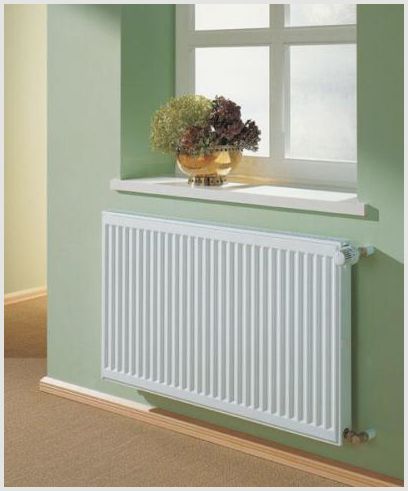

However, there are those who speak very favorably of such batteries. Some say that this makes it possible to significantly save on average 20-40% on electricity. This can be believed, because the boiling point of the heat carrier is rather low, and its heat transfer is at the highest level. Plus to this, there are also responses regarding the appearance of the slightest crack in the case. Be sure that in this case it will quickly get cold in the room. Depressurization leads to the fact that there will be atmospheric pressure in the system, and this, in turn, will increase the boiling point of the heat carrier. As a rule, these are all the pros and cons that, according to customers, vacuum radiators have. Reviews, of course, in most cases also depend on the manufacturer.
About EnergyEco
We can safely say that these are the most famous domestically produced vacuum heating batteries. The company manufactures devices from 1.5 mm carbon steel. The approximate heat output of one part is 170 kW at an operating pressure of 0.6-1.3 MPa. As a rule, a product can withstand a pressure of 2 MPa, and already at 5 MPa it completely collapses. Among consumers, EnerdzhiEko's products have almost no negative reviews, on the contrary, everyone speaks of a good build quality.
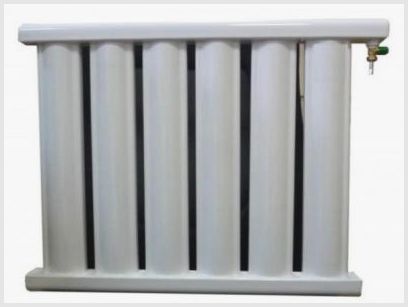

You cannot say that such a pleasure will cost you almost free. So, a six-section battery costs about 300 euros, for a device with 12 sections - 550 euros. But, not paying attention to this serious drawback, an electric vacuum heating radiator is purchased not only for apartments and houses outside the city, but also for heating buildings for production and offices. As it was written above, this demand is caused by significant savings when compared with cast iron and radiators made of aluminum.
We install a vacuum heating radiator with our own hands
If you do not want to pay professionals cash for the assembly, then you can really do it yourself. You may not have practice, but it is better to gain knowledge of theory in advance. There is nothing complicated here, and all work takes place in a couple of simple sequential stages.
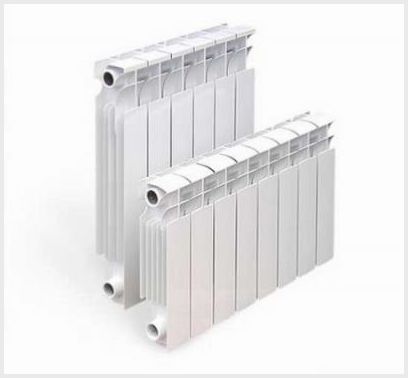

First, you should dismantle the old heating system, if, of course, you have not already done so. For this, the heat carrier is drained in advance. Then apply the fastening points for vacuum heaters. Install the spider fasteners and you need to check them for durability and strength, and only then hang the battery. If for no reason the fastener is not held in place, the heater may fall and be damaged.At another step, ball valves are covered with sealant. For this, a traditional sealant is used. It is necessary to connect the main pipe to the taps and once again implement the sealing of the system. It is necessary to draw your attention to the fact that abrasive material must not be used during the cleaning of the joints. This is because iron particles in the system are hazardous to the pump and seals. At the last stage, a heat carrier is poured into the system.
Do-it-yourself installation subtleties
It is not difficult to mount a vacuum radiator, but in order to do without alterations, you need to learn a few rules. It is necessary to follow the recommendations regarding the placement of the unit relative to the wall, floor, window sill.
At the same time, the distance between the radiator and the wall is at least 50 mm, between the device and the floor is from 20 to 50 mm, the optimal distance to the back of the window sill is 50-100 mm.
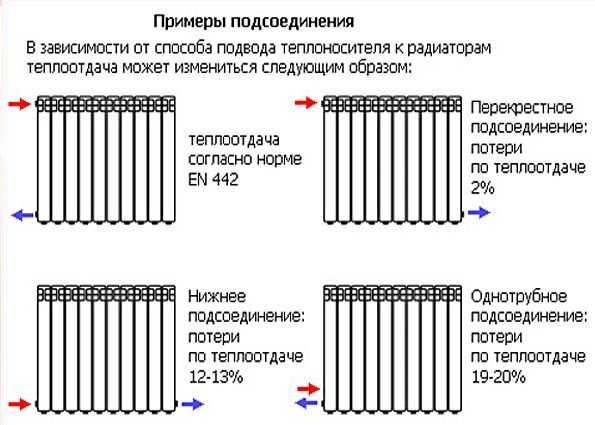

The photo shows the options for connecting radiators. You should be aware that the inclusion of other heating devices in the heating circuit along with vacuum ones reduces its efficiency.
The installation itself is not much different from inserting other types of radiators into the system. The only difference is that the entrance and exit are at the bottom.
The installation of the vacuum unit provides for a chain of following one after the other actions:
- The coolant is drained, the old heating device is dismantled.
- The marking of the installation sites is carried out.
- Attach the brackets. Test them for stability, strength.
- Ball valves are installed. Through them, the device is connected to the line. The joints must be sealed using tow or sealant.
- Check the system for leaks.
To improve heat transfer, a sheet of foil can be placed on the wall behind the radiator. In the presence of previously performed thermal insulation, it will be necessary to increase the length of the brackets by an amount equal to the thickness of the thermal insulation layer. If the house is insulated, the efficiency of the heating system will increase.
On the disadvantages and advantages of vacuum heating devices
Much of the advantages of these devices have already been described. For example, a vacuum heater will work both on wood and coal or gas. Not as an exception to the rule and electricity-powered power supplies, but also such modern solutions as a photovoltaic panel, etc. At the same time, the amount of water in the system is reduced to a minimum, by approximately 70%. It is necessary exclusively for heating the heat carrier. Plus, you can completely forget about air locks and rusting of the inside of the heater. Many manufacturers have a declared service life of about 30 years, and the device efficiency is 98%.
You are probably worried about why vacuum radiators in Moscow, and, in fact, are not very popular in most other cities of Russia? It's all about their low price. However, in European countries, this method of heating a room is very popular, and there are not very many such heating devices there.
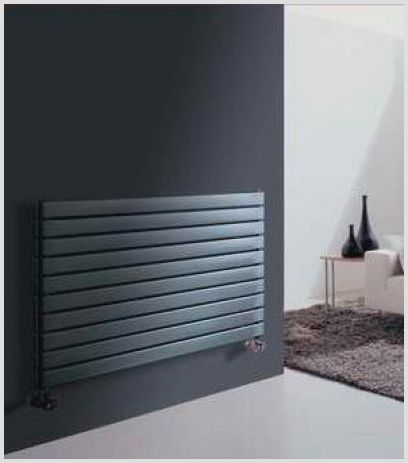

Positive and negative qualities of devices
In favor of using radiators that do not contain gases in the cavity, the following arguments are usually given:
- guaranteed absence of such a phenomenon as airing the system;
- low hydraulic resistance;
- complete absence or minimal corrosion;
- stable heat dissipation, because dirt does not settle on the inner surface of the case;
- the minimum number of threaded connections, which makes leaks unlikely;
- a wide range of coolants: antifreeze, water, steam, etc.
If we compare these products and the usual water ones, then in apartments that are heated centrally, the air will not be heated equally. In the second case, the water entering the system heats the entire body of the radiator directly.In a vacuum, water from the central line heats only the lower part.
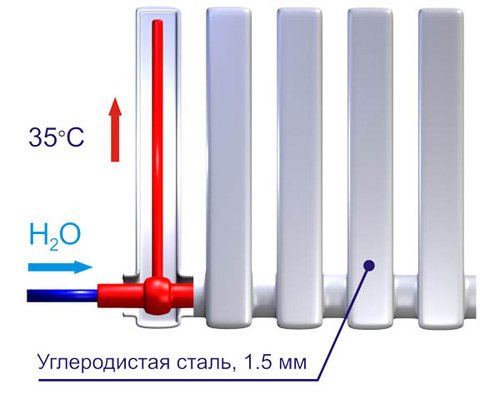

The use of vacuum radiators gives a heat carrier savings of up to 80%. In addition, when the battery is disconnected, heated gas particles slow down the movement, so it cools down for a long time.
The remaining sections of the battery receive heat from the evaporated liquid. Due to the fact that the heat transformer has both temperature and thermal conductivity lower than that of water, the walls of the vertical sections of the radiator will warm up less.
To provide the same temperature regime as with water batteries, the vacuum radiator must have a large area.
Manufacturers claim that product sections warm up instantly. With a small volume of water of 0.5 liters, one fragment has a heat transfer of 300 W. It should be noted here that each section of the classic cast iron radiator contains 4 liters of liquid.
The savings are especially noticeable when using antifreeze. Its acquisition costs will decrease significantly. A small amount of coolant, no need for expensive equipment are the main advantages of using vacuum radiators.
The advantage of these devices is the fact that the room warms up more smoothly vertically. According to measurements, the difference is about 0.5 ° C for every meter of height. In a room with a ceiling height of 2.5 m between the appliance and the floor, this will be approximately 1.25 ° C.
The efficiency of vacuum radiators is manifested when using alternative energy sources, such as a heat pump, solar panels.
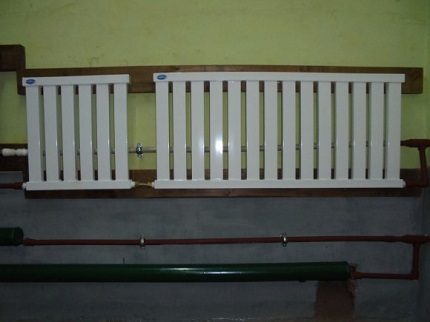

While cast-iron batteries can heat the room when the coolant reaches a temperature of at least 65 ° C, 35 ° C is enough for vacuum devices
You should be aware that if due to some circumstances, the section depressurizes, the vacuum radiator will not work. The reason is that the pressure indicators inside and outside the body will be equal.
Such a breakdown poses a threat to the well-being and health of people living in the house, since the liquid inside is poisonous.

